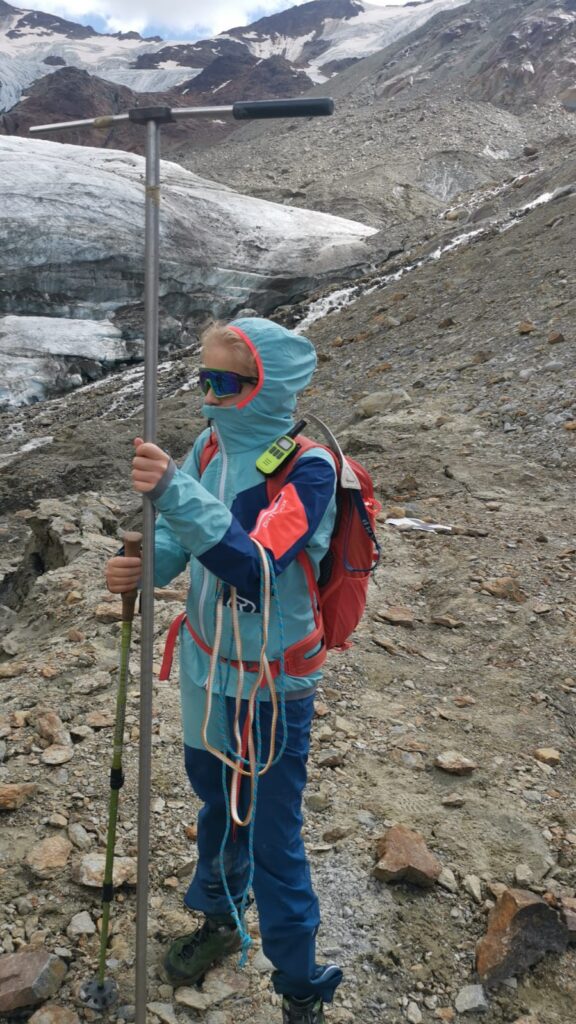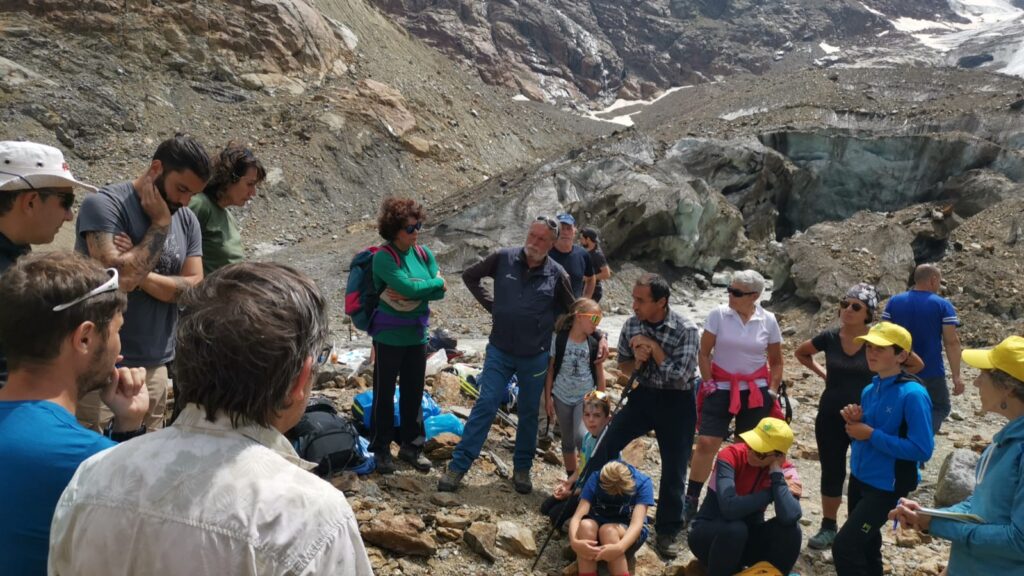In recent days, Unimi ESP glaciologists have carried out a joint campaign with Unibg historians to analyze the relationships between glacial melting, which is particularly pronounced in this hot summer of 2024, and the emergence of war relics dating back to World War I. The site chosen for the joint monitoring is the Forni Glacier, an open-air laboratory in the heart of Stelvio National Park where Unimi ESP has been measuring melt intensity and atmospheric conditions at the glacier surface for years, including with permanent instrumentation.
Surveys conducted by Guglielmina Diolaiuti of Unimi showed at the glacier surface an intense melting that led to glacial thickness reduction of 10 cm per day, in parallel Stefano Morosini of Unibg and historian of the Stelvio National Park found several materials dating back to the First War and returned from the glacier just with the melting of these days.
The mission also included the participation of Claudio Smiraglia of the Italian Glaciological Committee and of Maria Albina Andreola, cultural councilor of the municipality of Valfurva in whose territory the Forni Glacier is located.

Research shows that the presence of soldiers and the fighting that took place during World War I in these high mountain areas had an impact on the environment, evidence of which continues to emerge due to the intense melting caused by high summer temperatures. Unimi ESP researchers estimate that the Forni glacier has lost more than 130 m in thickness over the past 100 years. Iron wire, bombs and tools used by soldiers and dropped inside the crevasses remained hidden until melting in recent years removed the ice that cloaked them, and they show up today to mountaineers visiting the glacier.









